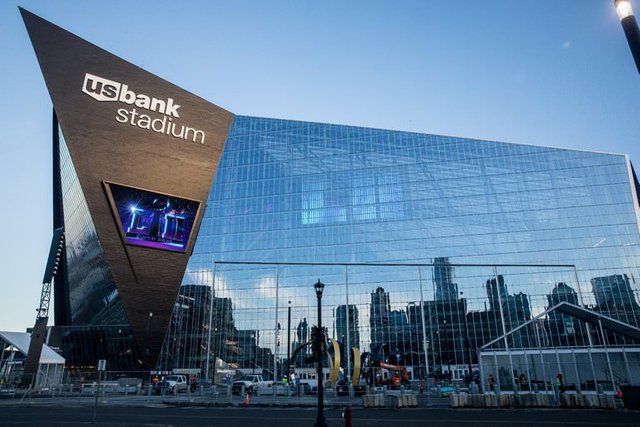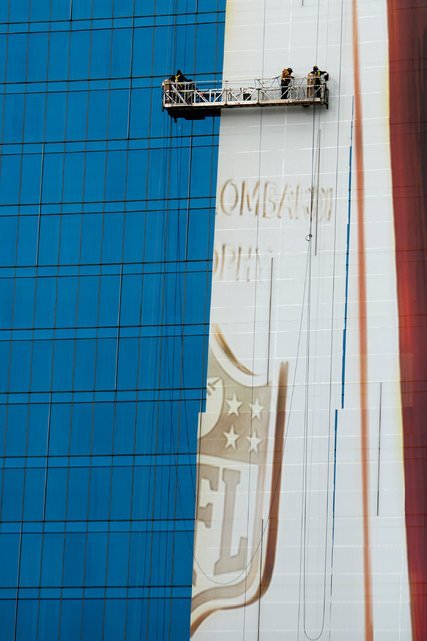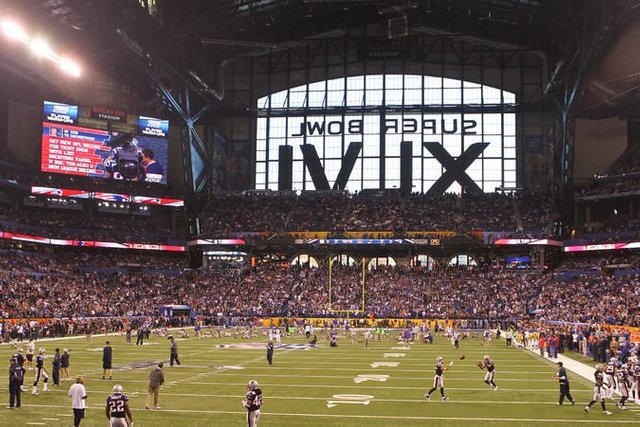Windfall for Super Bowl Hosts? Economists Say It’s Overstated

For over 10 years, the N.F.L. has offered an approximately nine-figure renumeration with American urban communities: Invest a huge number of dollars of open cash in a stadium, and a Super Bowl will come.
Seven N.F.L. stadiums have been worked over the most recent 12 years. By 2020, all will have facilitated the nation's greatest brandishing exhibition. At the point when new stadiums open close Los Angeles and in Las Vegas amid the following decade, they will get a Super Bowl, as well.
New stadiums, bolstered by whatever number open dollars as could be expected under the circumstances, have for quite some time been one of the association's needs. To get stores for them, the N.F.L. dangles the possibility of playing host to a Super Bowl and its guaranteed wealth.
Contingent upon what, precisely, constitutes an open dollar, citizens contribute a normal of about $250 million to construct N.F.L. stadiums, as per the warning firm Conventions, Sports and Leisure International. For U.S. Bank Stadium in Minneapolis — which opened in 2016 and will have the Super Bowl on Sunday — the province of Minnesota burned through $348 million and the city kicked in an extra $150 million, somewhat under 50 percent of the stadium's aggregate cost.
A financial effect report charged by the Minneapolis Super Bowl Host Committee expressed that a significant part of the citizen interest in the stadium would be recovered by the district amid the occasion. It evaluated that the Super Bowl would contribute $343 million to the area, incorporating $29 million in impose income.
Keep perusing the primary story
Keep perusing the primary story
"We are adopting a preservationist strategy with the numbers," Michael Langley, the CEO of the Minneapolis-St. Paul financial advancement office, said. "In any case, regardless of whether you are just discussing $350 million to $400 million, that is a gigantic advantage to the group, just as far as dollars spent in February."

Games business analysts don't see the circumstance an incredible same way. They said the financial effect consider for the Minneapolis Super Bowl started by saying all the correct things in regards to how past assessments had "been censured as greatly overinflated, incorrect, even intentionally distorted." In the end, however, it did likewise.
"They generally speak better than average about that stuff, and afterward they go off the rails," said Victor A. Matheson, a games financial analyst at the College of the Holy Cross in Worcester, Mass.
Matheson has composed broadly about the impact of Super Bowls. He has discovered that they for the most part create somewhere in the range of $30 million to $130 million in monetary action for the host city.
"Not nothing, and not what you would wheeze at," he stated, "but rather somewhere close to a quarter and a tenth of what is being asserted."
Take lodging rooms, for instance. To have the Super Bowl, Minneapolis needed to demonstrate that there were no less than 24,000 of them inside a hour of the stadium, equipped for pleasing guests amid the whole 10-day Super Bowl festivity. In like manner, the financial effect report evaluates the Super Bowl will create 230,000 evenings of lodging remains.
Be that as it may, if the Super Bowl were not nearby, a large number of those lodging rooms would have been filled at any rate, by business voyagers, conventiongoers and — yes, even in Minnesota in the dead of winter — sightseers. It is the net inhabitance pick up, not gross inhabitance, that issues, said Frank Stephenson, a business analyst at Berry College in Mount Berry, Ga.

Stephenson has considered lodging inhabitance widely, utilizing a wellspring of day by day information that incorporates things like the quantity of rooms leased and the day by day rate. This enables him to appraise what number of inn rooms in a locale would for the most part be reserved and for what cost, and contrast that and when the Super Bowl comes to town.
In an inevitable paper, Stephenson analyzes the 2012 Indianapolis Super Bowl, which created 224,000 inn stays, as per its financial effect report. Indianapolis fills in as an able correlation with Minneapolis since it is a chilly climate city in the Midwest. As a matter of fact, in the week paving the way to the Super Bowl and the three days a while later, Indianapolis inns leased an extra 49,000 rooms contrasted and what might be normal, not as much as a fourth of the gauge.
The rooms cost more than they generally would, producing about $28 million in extra income. In any case, Stephenson forewarned against expecting that the cash had remained in Indianapolis; truth be told, there was overwhelming spillage.
"They don't offer it to the servant or bellboy or front-work area individual," he said. "A considerable measure of it just streams to whoever possesses the inn."
R. T. Rybak was the leader of Minneapolis for a long time, including when the City Council barely endorsed contributing $150 million to construct U.S. Bank Stadium. "I despise sports financial matters, however I adore my city," he stated, "and we wound up making an arrangement that wound up being a money related bonanza for Minneapolis."
He disclosed that notwithstanding helping fabricate U.S. Bank Stadium, the arrangement likewise repaired the Target Center field and gave assets to work the tradition focus. It additionally prodded Wells Fargo to assemble two office towers close to the stadium and has prompted tremendous advancement in the Downtown East neighborhood, however the development reflects a pattern seen the nation over and can't be attributed basically to development of the new stadium.
I would not have completed an arrangement only for the football stadium," Rybak stated, including, "You don't assemble a stadium for the Super Bowl."
It's fortunate he didn't. At the point when urban communities offer to have the Super Bowl, they consent to a broad rundown of particulars, which incorporate giving products and ventures worth a huge number of dollars to the N.F.L., all at no cost to the association. The Star Tribune of Minneapolis acquired a duplicate of the 153-page offer book the N.F.L. sent to imminent hosts, and the offer advisory group revealed to The Star Tribune it had consented to a greater part of the conditions laid out, figured it didn't determine what it had rejected.
The offer book demonstrates the host city must give the N.F.L. with 35,000 parking spots, a huge number of lodging rooms, several transports and limousines, bulletins, security, sustenance and an exception on paying all deals charges, among many different particulars.
The expression "at no cost to the N.F.L." shows up in the book 65 times.
These expenses, from a certain perspective, are borne by the host panel. Minneapolis brought $30 million up in promises from the private segment before offering on the Super Bowl. As indicated by Langley, of the local monetary improvement office, the council has now raised more than $50 million to put on the amusement. Enough is planned to pay for police additional time, crisis snow evacuation or some other cost overwhelms, he said.
"This is an extremely proficient gathering," Langley said.
Assuming this is the case, it is the uncommon Super Bowl have board of trustees that has planned for additional items. The city of Santa Clara, Calif., had its expenses to have the 2016 Super Bowl repaid, yet the diversion cost adjacent San Francisco nearly $5 million, generally in police and travel administrations. Chairman Jerry Weiers of Glendale, Ariz., revealed to ESPN that the city lost cash facilitating the diversion in both 2015 and 2008. New Jersey gave the N.F.L. a $8 million tax cut, and state-possessed New Jersey Transit lost $5.6 million when the diversion was played there in 2014.
"The greater part of the monetary stuff, in case you're fortunate, will wash," Matheson said. He noted there was one major noneconomic legitimization for facilitating the Super Bowl: bliss. "We really do get quantifiable effect from individuals' fulfillment directly after a city has facilitated the Olympics, Super Bowl or World Cup," he said.
Maybe, yet is that the godsend Minnesota envisioned when it burned through $498 million on U.S. Bank Stadium?